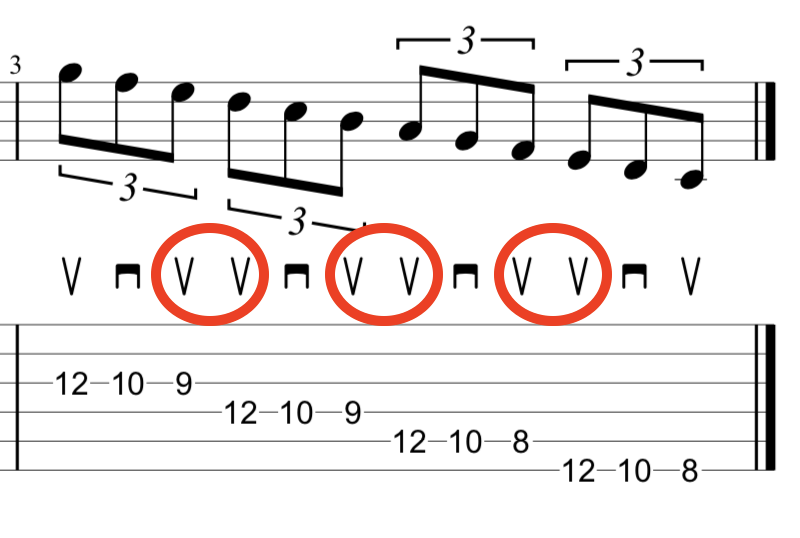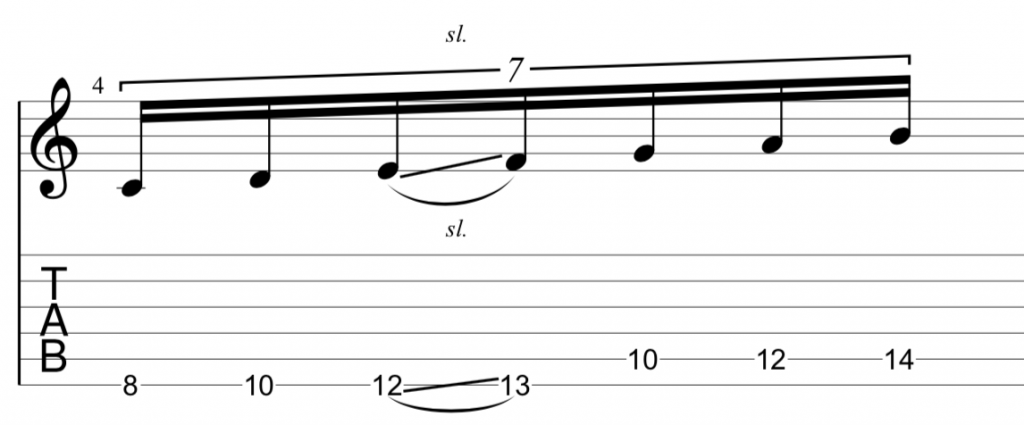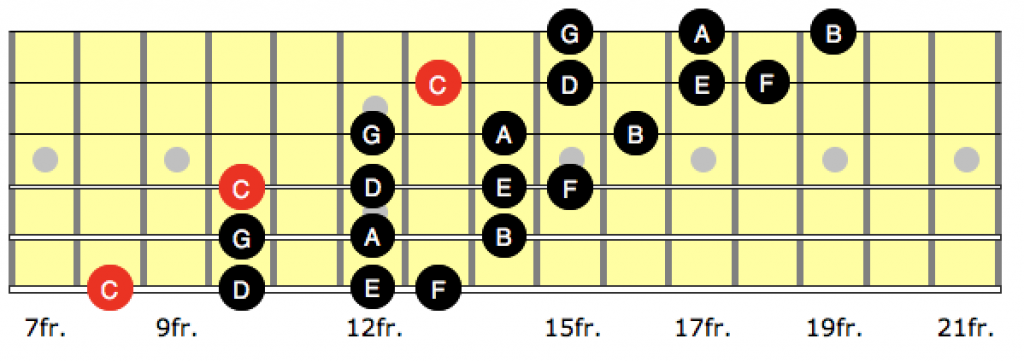3 Note Per String Scale Patterns
3 note per string scale patterns are favoured amongst shred guitar players, but the patterns have caused controversy amongst the online guitar community. Let’s take a look at what 3 note per string patterns are and how they can benefit your playing.
What Are Three Note Per String Scale Patterns On Guitar?
I always like to spell out things that appear obvious, because I’m always the guy that never picks up on the obvious.
Three note per string scales, are scales that are arranged on the guitar, by placing three notes on each string.
Let’s say we wanted to play a C major scale, which has the following notes:
C D E F G A B
There are several ways we could arrange those notes on the guitar. To make a stupid example, we could arrange the notes in the following way:

But, as you can see… that is not a very helpful way to layout the scale. We can’t do anything with that.
However, if we were to place three notes on each string:

We would start to create something useful. By continuing through several octaves of the scale, we can create a “full” scale pattern, with 3 notes on each string:

Now, this is a lot more useful than our first attempt, and creates several very nice benefits for our guitar playing.
Why Are They Useful?
So now we understand what a three note per string scale is, let’s look at the different ways it can benefit your playing:
1. Consistency of Pick Direction
Three note per string scales are the only way of arranging 7 note scales that give you a beautiful consistency with your pick direction.
Look at the following tab for the above three note per string major scale, with the pick strokes added:

Let’s take a look in detail at what happens when we change string:

The major benefit of this scale, is that as the pick moves in the direction of the string change. We get the same effect on the descending section of the scale:

Again, we can see that the pick stroke starts naturally in the direction that the pick is moving in.
This consistency of pick direction, or economy of motion, is why shredders love 3 note per string scales, as it allows you to, with practice, generate massive speed for playing your scale.
2. Three Note Per String Shapes Create Memorable Patterns
If we take another look at the C major three note per string scale:

We can break the scale down into three distinct patterns as follows:

And when we look at the scale patterns in this series, we find that a lot of these sub-patterns repeat.
What Are The Alternatives?
Three note per string scales are not the only way to play scales on guitar.
There is one popular alternative called CAGED, and a lesser known system of 4/3 note per string scales.
What is the CAGED Scale System?
This is a system for arranging scale notes around the open chord patterns for the C major, A major, G major, E major and D major chords. It is probably the most popular scale system for guitar.
I don’t know why.
When you start to look into modes, there are 7 modes to the major scale. CAGED has 5 patterns. 5 patterns for 7 modes? This gives rise to things such as the “Dorian / Phrygian” mode in CAGED, which, does not make sense.
As far as it being a system for understanding how a major scale is arranged around a chord shape, it works. However, I find myself asking why that is an approach that should be taken in the first place?
You can get the same understanding just by learning your arpeggios.
3 note per string also gives you a huge technical advantage over CAGED. In the CAGED system, you end up with 3 notes on most strings, and 2 notes on others. This means that, your pick has to occasionally jump a string and reverse direction, rather than move through in one fluid motion.
I wouldn’t recommend learning it.
4/3 Note Scale Patterns
I’ve rarely seen these talked about, although I have read that Yngwie Malmsteen likes to use them.
In this system, we place 4 notes on one string, three notes on the next.
So, if we were to take a C major scale:
C D E F G A B
We could arrange the notes in the following way:

We would think of playing it in the following way:

By using the slide, we are able to keep the consistency in the right have with the pick:

A major advantage of this scale system is, the single pattern can quickly give us a three octave scale, as follows:

And if we were to play this as a tab:

When descending, we may want to use an alternative version of this scale, but we cover that in more detail inside the members area.
To wrap up 4/3 note per string scales, I like them. I’ve heard some shredders say they can actually get more speed than they can with 3 note per string scales. The 4/3 note scales are also very simple, with just a single pattern giving us 3 octaves on the neck.
Who Should Learn Three Note Per String Scales?
Anyone who wants to shred. When you look at the system technically, but also conceptually, it is the perfect system. 4/3 scales are also great for shredders, and ideally, you would want to learn both, how to use them across keys and train on them.